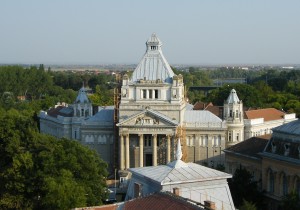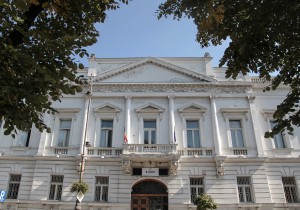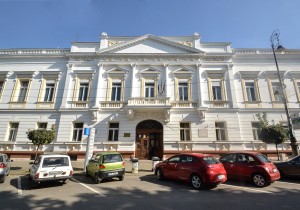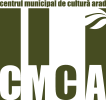The Administrative Palace of Arad nowadays hosts the City Hall of the municipality of Arad and the Institution of the Prefect of Arad County. The astonishing building embodies one of the most significant works of eclectic architecture in the city.
History
The Administrative Palace of Arad was built between 1872-1876 and was opened in 1877, when the construction of the festive hall was finished. The land measuring 1.200 square fathoms (4.320 square meters), where the building was supposed to be built, was property of the Saline Office (the Salt mine).
Odon Lechner, an architect from Budapest, won the international competition for the new town hall headquarters’ design, having been selected among 17 candidates. During construction, the original project had to be modified, decision based on financial reasons.
The U-shaped building, bearing no blind wall, was seen as a true „Palazzo del Municipio”, reflecting the citizens’ of Arad will to follow the European model of urban renewal and modernisation.
The central tower is 54 meters high. The clock situated at the top of the tower was brought from the Netherlands. Its bell marked each half-hour for almost a century. After 1989, it was reconditioned, and once Romania joined the European Union, the song played at each passing hour was replaced with the Anthem of Europe.
The initial 90 rooms, designed to be offices, were used by 167 administrative clerks. The first floor shelters the great hall with balcony, where meetings of the near-200 municipal deputies used to take place.
Architecture
The building is highlighted as one of the most significant works of eclectic architecture in Arad. The regular façades are rhythmic, decorated with classical elements, and the central risalit of the main façade bears rich neo-Renaissance references. The overall architectural style of the City Hall combines characteristics of Flemish neo-Renaissance with the style of late medieval town halls.
Interesting facts
The four big sculpted wood gates, maintained as such up to the current day, received their initial aspect at the end of the 20th century. The hall’s windows incorporate stained glass representing the four seasons, allegorically depicted. They were created by the architect Sever Frențiu, illustrating “The Time” theme in two cycles: the cycle of seasons and that of months.
In remembrance of the events of December 1989, the square facing the building was named The Revolution Square and a monument commemorating the heroes of the 1989 Revolution was built in its midst.
Similar tourist attractions
The Cultural Palace of Arad is one of the most emblematic buildings in the city, which hosts today the Museum Compound and also the State Philharmonic Orchestra of Arad.
The building has hosted, over time, the Prefecture of Arad and the General Public Finances. Currently, it is named "Arad County Administration for Public Finances”.
Throughout time, the building hosted the Prefecture of Arad, then it became the editorial office of „Adevărul” and „Observator” newspapers and the Rectorate of „Aurel Vlaicu” University.

 1 votes, average: 4.00
1 votes, average: 4.00



